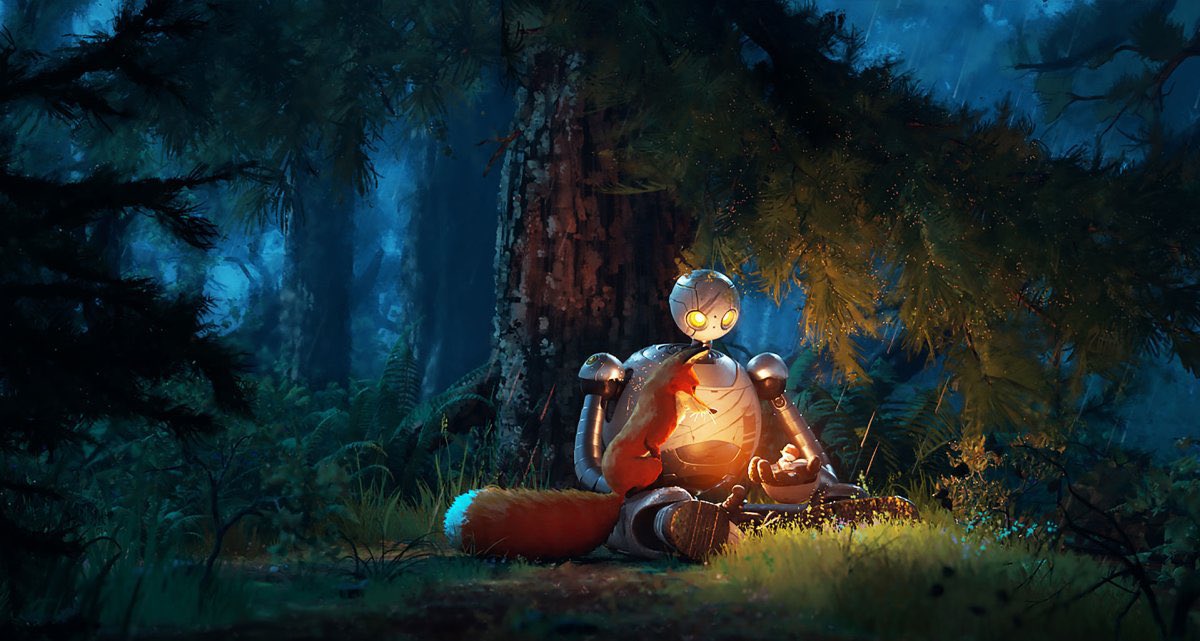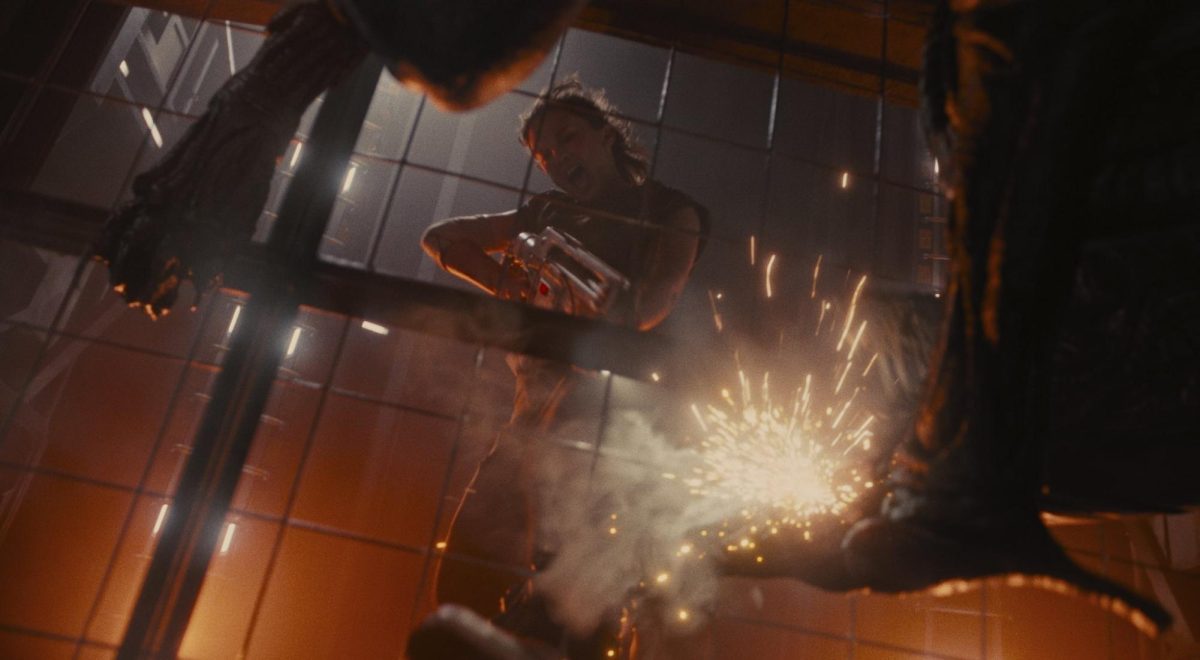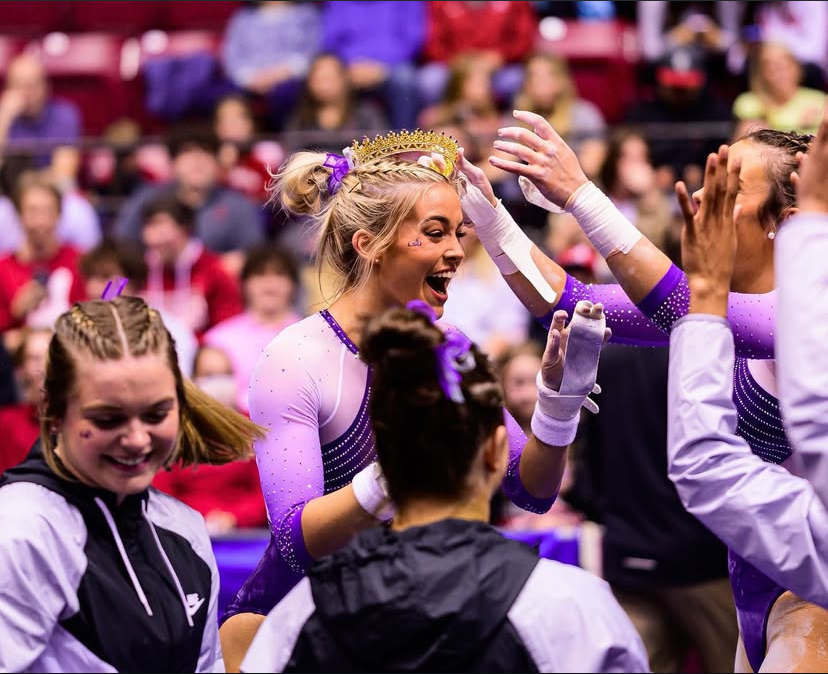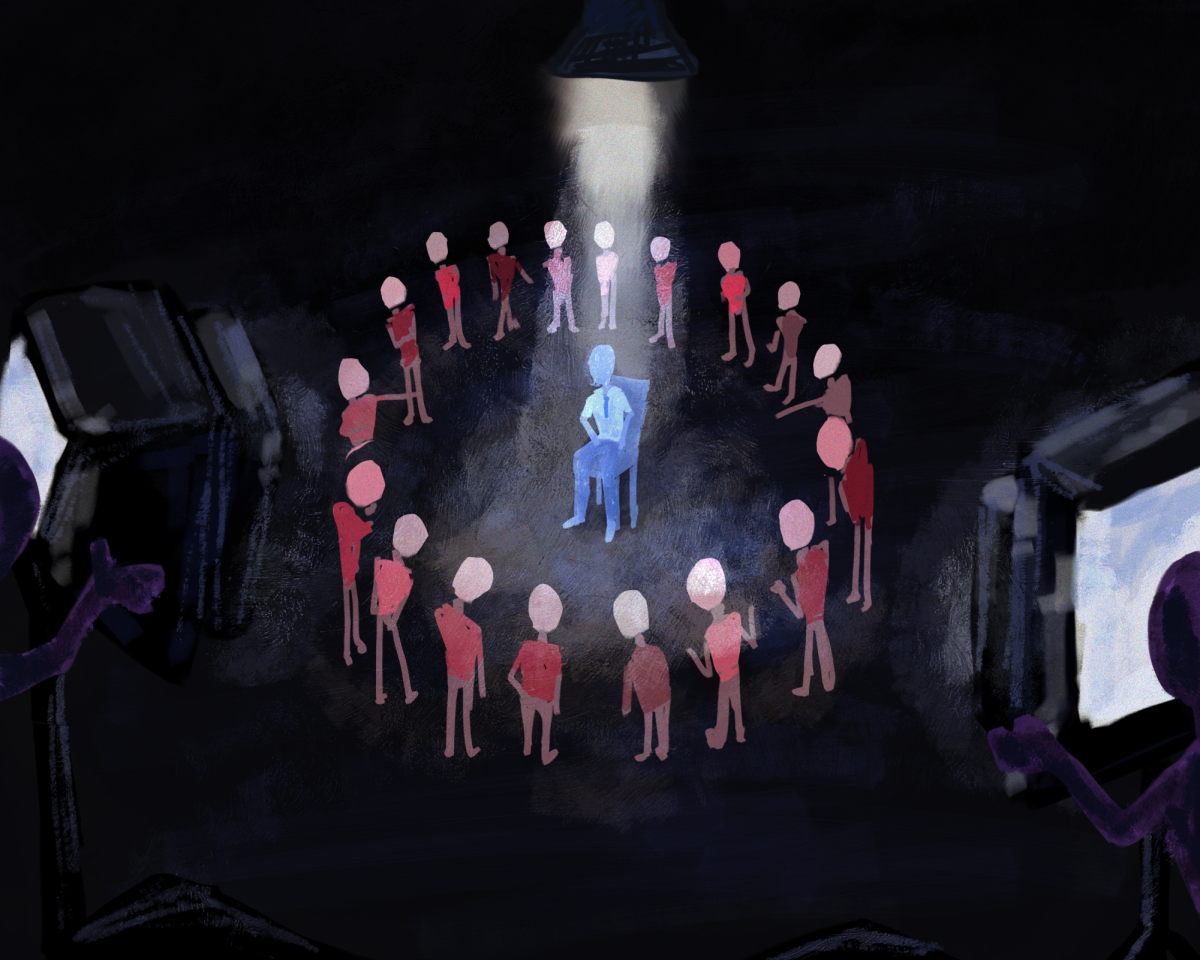![]()
“The Wild Robot” opens with the robot ROZZOM Unit 7314, voiced by Academy Award winner Lupita Nyong’o. “Roz” washes ashore on and unnamed island, powering on and instantly looking to assist the nearby wildlife. Naturally, they’re terrified and reject her help. After the creatures deny her, she quickly faces her first of many challenges on the island: a strong wave knocks her around, forcing her to adapt to survive and commencing her arc for the story.
Nyong’o delivers a captivating performance that pulls powerful feelings of love and compassion even as an “emotionless” robot. Previously winning awards for her performance in “12 Years a Slave,” she continues to showcase her skills in the new release.
After facing tribulations against nature’s wrath, the titular wild robot sets off an emotional tale of identity, isolation and tragedy with one question: “Did anyone order me?” Peter Brown, the author of the original 2016 book also titled “The Wild Robot,” first conceived the concept for the story when contemplating “unnatural things living in surprising places,” he said.
Being a robot, Roz’s facial expression is stagnant throughout. Her emotionless persona embodies the coldness of isolation. To combat this, the film uses colorful lights to express her emotions. Dreamworks’ gorgeous paintbrush animation makes “The Wild Robot” one of the year’s most stunning films. While earthy tones are present for most of the runtime, vibrant colors take center stage in the film’s final act.
For much of the exposition, Roz cannot communicate with the island’s animals. This barrier again forces her to adapt and is vastly enjoyable to watch. Often, music and dialogue oversaturate animated films to hold young audiences’ attention, but because of the lack of any communication early on, “The Wild Robot” fills this time with naturalistic noises. The sound of waves sweeping by one another or wind brushing against the island’s greenery consumes full segments, offering a chance for the audience to breathe. These soft and subtle sounds serve an important purpose early on, demonstrating the island’s seclusion from humanity.
After an extended build-up of her seclusion, Roz finds an egg that soon hatches into a gosling. With the gosling’s family dead and Roz being the first thing he sees, she inadvertently becomes his mother, establishing the unique conflict of the film and offering a distinct and personal perspective on the challenges of parenthood.
The filmmakers took liberty from Brown’s 2016 novel to strengthen the film’s maternal themes. In the book, Roz’s programming hardwired her simply to survive. In the film, however, her purpose is to help with whatever task presents itself to her. Instead of caring for the young goose out of empathy, she does it because of her code, which does not restrict her love for him.
Roz’s motherly tasks open the door for a powerfully emotional story that reminds audiences of the risks mothers often take for their children, and how loved they are. Director Chris Sanders, who also notably headed “How to Train Your Dragon” and “Lilo and Stitch,” included a plethora of stirring moments that may parallel similar events from a viewer’s personal life, making the film widely applicable and emotionally powerful.
Roz’s high-tech robot figure, precisely and thoughtfully crafted, harshly contrasts the randomness of nature. Her cleanness is a constant reminder that she does not belong, but she receives souvenirs throughout—a scratched chest and a log-replaced foot—to visually connect her to the wilderness.
Although the island remains unnamed, the film pairs familiar locations with visual storytelling similar to Pixar’s 2008 feature “WALL-E” to depict the dystopia. Some fans might recognize more overlaps between the two films, but they offer vastly different experiences that are enjoyable in their own ways. Though both robot main characters defy their programming for the good of a community, “The Wild Robot” displays the beauty of nature while “Wall-E” exhibits the destruction of humanity.
Unlike “WALL-E,” the filmmakers of “The Wild Robot” decided to veil the history of the fictional dystopia, a strong choice, as an overflow of unnecessary information could’ve taken away from its focus: a sweet and emotionally captivating story of the hardships between a young goose and his mother.
On release, “The Wild Robot” cemented its spot alongside “Across the Spider-Verse” and “The Last Wish” in an ever-shifting discussion regarding animated films. All audiences can find enjoyment in the movie, whether it be for its commentary, eccentric cast of characters or colorful animation. Making nearly $200 million on a budget under $80 million, it is an early pick for the Academy’s “Best Animated Feature” award, as found not just at the summit of this year’s animation, “The Wild Robot” is among the decade’s finest films, and audiences should praise it accordingly.
















